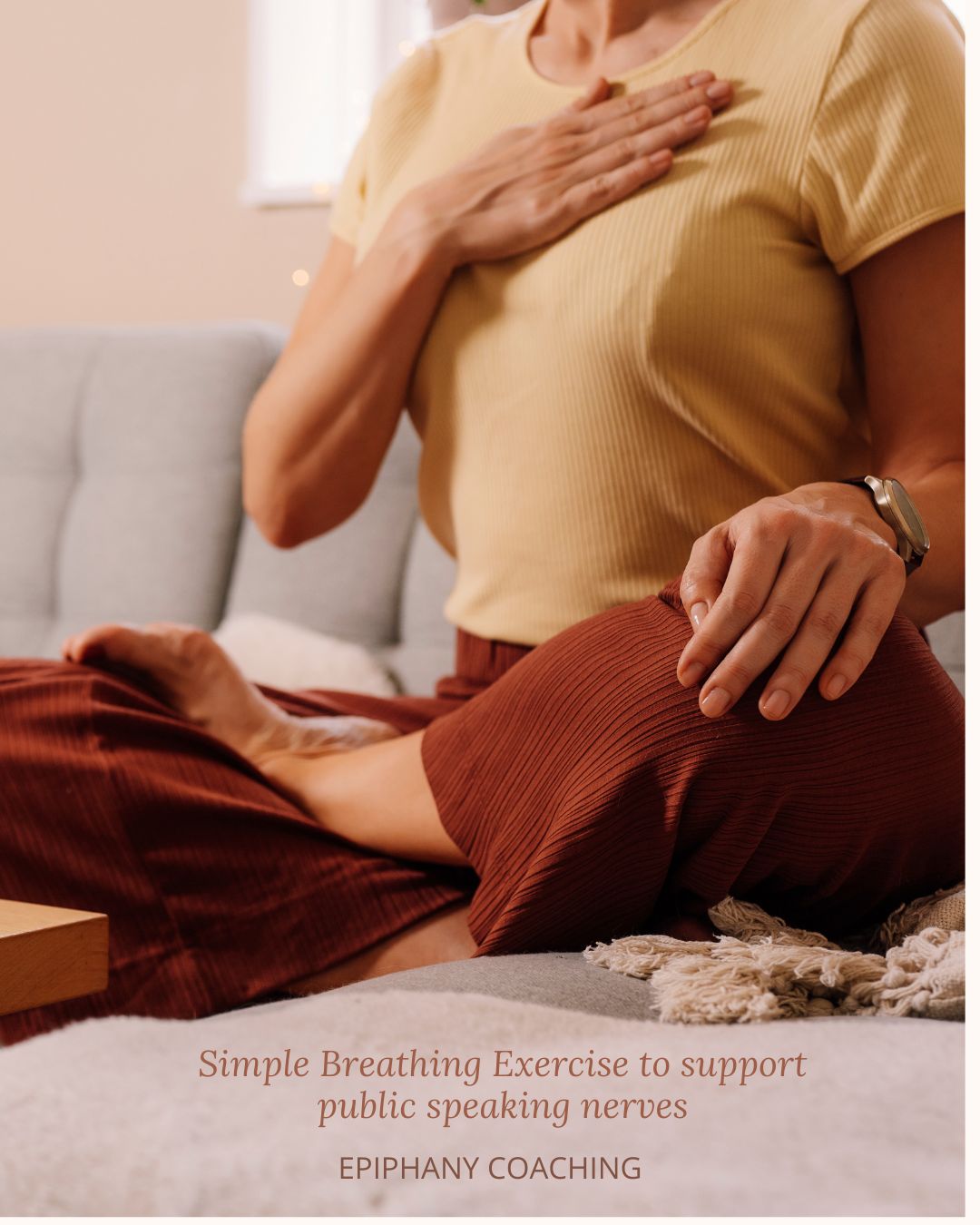“Take a deep breath”, “Just breathe through it” — advice we’ve all heard. But do breathing exercises for public speaking actually work?
In this blog, I’m sharing one technique I come back to again and again — a simple breathing exercise that helps me stay calm and connected when the pressure builds.
When Pressure Takes Over During Public Speaking
It’s easy to think the pressure is about the audience, the topic, or the time limit. But for most of us, pressure starts internally.
I’ve noticed it in my own experience: the tight chest, the racing heart, the sudden feeling that I’m not ready — even when I am. My nervous system kicks in. I start second-guessing myself. I lose that sense of connection — to myself, to my message, and to the people I’m speaking to.
Noticing that shift – from grounded to overwhelmed – is the first step to managing it.
What Calm Really Means
Staying calm doesn’t mean eliminating nerves altogether. For me, it means being able to feel what’s happening in my body — and gently guide myself back to a state where I can think clearly and speak with impact.
Personally, I’ve found calm through:
- Trusting that I’ve prepared well
- Knowing why I’m speaking (I’ve written more about that here)
- Having simple breathing exercises for public speaking I can rely on when things feel intense
Let’s focus on that last one.
Why Breathing Works
When we feel anxious, it’s usually because our body is reacting to a perceived threat — even if that threat is just the idea of being judged or making a mistake. This triggers the fight-or-flight response, which floods us with stress hormones like adrenaline and cortisol. Our heart races. Our breathing becomes shallow and rapid. Our muscles tense.
Breathing slowly and deliberately helps override that stress response. It sends a message to your brain that you’re safe — even if your thoughts haven’t caught up yet.
This is known as bottom-up regulation. Instead of trying to think your way out of anxiety (which rarely works in the moment), you use your body to tell your brain: you’re okay.
A calm breath pattern supports the parasympathetic nervous system, which is responsible for rest, recovery, and feeling steady. Over time, breathing exercises can actually retrain your nervous system to respond more calmly in high-pressure situations.
My Go-To Breathing Exercise for Public Speaking
I’ve used this breathing technique before job interviews, presentations, and even during high-stakes meetings. It’s simple, subtle, and effective — no one even needs to know you’re doing it.
4-4-6 Breathing:
- Inhale for 4 counts
- Hold for 4 counts
- Exhale for 6 counts
- Repeat 3–5 times
Why it helps:
- The longer exhale activates the body’s calming response (the parasympathetic nervous system).
- The breath hold gives the mind something to focus on, interrupting spirals of self-doubt.
- It physically slows your heart rate, reducing that sense of panic.
When to use it:
- Before a meeting where you are going to speak.
- While listening to introductions or other speakers.
- Any time you feel that tight, fast, nervous energy rising.
Why Regular Practice Matters
One breathing exercise before a big meeting can definitely help — but like any skill, the real power comes with regular practice. Think of it like physical exercise: one sit-up won’t give you a six-pack, but small, consistent efforts over time can build strength and resilience.
Breathing works the same way. By practising even just a few minutes a day, you’re training your body to respond differently under pressure. You’re teaching your nervous system what calm feels like — so that when stress hits, your body knows how to return to that state more easily.
And the best part? You don’t need any special equipment, apps or quiet rooms. You can do a few slow, mindful breaths while the kettle boils or anytime during your day. Why not try it and see if it helps?
Further support with public speaking?
Fear of public speaking doesn’t make you broken, weak, or less professional. It makes you human.
The women I work with are often already highly capable, experienced professionals. It’s not ability that’s holding them back—it’s anxiety, mindset, and self-criticism. The good news is that all of these things can shift with the right support and strategies.
If you’re looking for tailored support to move past public speaking fear—at your own pace—you might be interested in my self-paced online course, Overcoming the Fear of Public Speaking, or my affordable coaching options.
You don’t have to face this fear alone. And public speaking confidence doesn’t have to be something other people have and you don’t. It’s a skill you can build, one step at a time.

View comments
+ Leave a comment